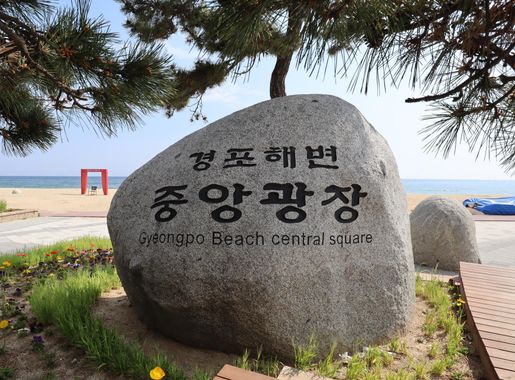
Enchanting Coastal Delights of Gangneung
Discover the serene beaches, rich cultural heritage, and delightful seafood of Gangneung's coastal areas in South Korea. Perfect for a relaxing and enriching getaway.
Gangneung's coastal areas are a hidden gem on South Korea's east coast. The area is renowned for its stunning beaches, vibrant culture, and captivating natural beauty. Visitors can explore a variety of beaches, each with its own unique charm. From the serene Gyeongpo Beach to the bustling Anmok Beach, there's a spot for everyone to relax and soak up the sun. The region is also known for its rich history and cultural heritage. The Ojukheon House is a must-visit, offering a glimpse into Korea's past. For those interested in art and literature, the Heo Gyun and Heo Nanseolheon Memorial Park provides an insight into the lives of two famous Korean figures. Gangneung's coastal areas offer more than just scenic views. The local cuisine is a highlight, with fresh seafood being a staple. Visitors can enjoy local delicacies at the bustling Jumunjin Fish Market or relax in one of the many beachfront cafes. The area is also famous for its coffee culture, particularly at Anmok Coffee Street, where you can enjoy a perfect cup with an ocean view.
Local tips in Gangneung Coastal Areas
- Visit Gyeongpo Beach early in the morning to catch the sunrise over the East Sea.
- Check out Anmok Coffee Street for a unique coffee experience with a view of the ocean.
- Explore the local seafood markets for fresh and affordable seafood delights.
- Take a walk along the Gyeongpo Lake, especially during spring when cherry blossoms are in full bloom.
- Consider renting a bicycle to easily explore the coastal areas and nearby attractions.
Enchanting Coastal Delights of Gangneung
Gangneung's coastal areas are a hidden gem on South Korea's east coast. The area is renowned for its stunning beaches, vibrant culture, and captivating natural beauty. Visitors can explore a variety of beaches, each with its own unique charm. From the serene Gyeongpo Beach to the bustling Anmok Beach, there's a spot for everyone to relax and soak up the sun. The region is also known for its rich history and cultural heritage. The Ojukheon House is a must-visit, offering a glimpse into Korea's past. For those interested in art and literature, the Heo Gyun and Heo Nanseolheon Memorial Park provides an insight into the lives of two famous Korean figures. Gangneung's coastal areas offer more than just scenic views. The local cuisine is a highlight, with fresh seafood being a staple. Visitors can enjoy local delicacies at the bustling Jumunjin Fish Market or relax in one of the many beachfront cafes. The area is also famous for its coffee culture, particularly at Anmok Coffee Street, where you can enjoy a perfect cup with an ocean view.
When is the best time to go to Gangneung Coastal Areas?
Iconic landmarks you can’t miss
Gangneung Jungang Market
Discover the flavors and culture of South Korea at Gangneung Jungang Market, a must-visit destination for culinary enthusiasts and cultural explorers.
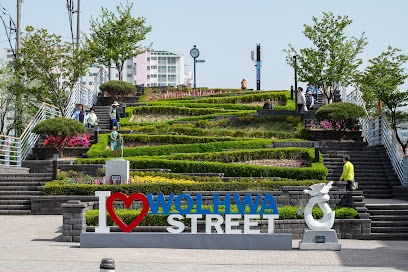
Ojukheon
Discover Ojukheon, a historical landmark in Gangneung-si, showcasing Korea's rich cultural heritage and the life of philosopher Yulgok Yi I.
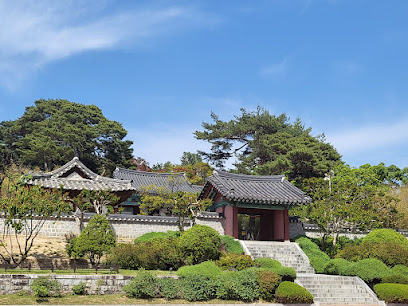
Anmok Beach
Discover the beauty and vibrancy of Anmok Beach in Gangwon-do, South Korea, where sun, sand, and sea come together for an unforgettable getaway.
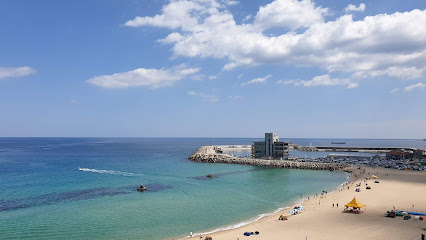
Gyeongpo Beach
Discover the beauty of Gyeongpo Beach in Gangneung-si, where golden sands, clear waters, and cultural experiences await every traveler.
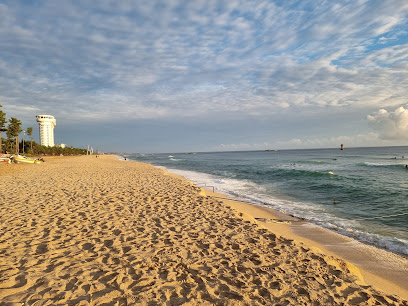
Sun Cruise Hotel
Discover the breathtaking beauty and luxury of Sun Cruise Hotel, a unique resort hotel on the stunning coastline of Gangwon-do, South Korea.

St. John's Hotel
Discover the charm of St. John's Hotel in Gangwon-do, where stunning ocean views, luxury accommodations, and local attractions await.
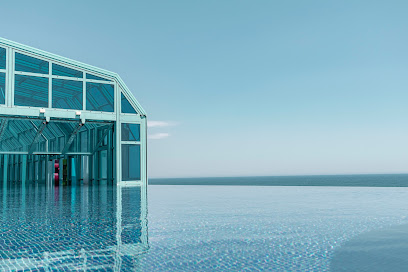
Sandglass Park
Explore the serene beauty and artistic charm of Sandglass Park, a must-visit destination in Gangwon-do, perfect for relaxation and family fun.
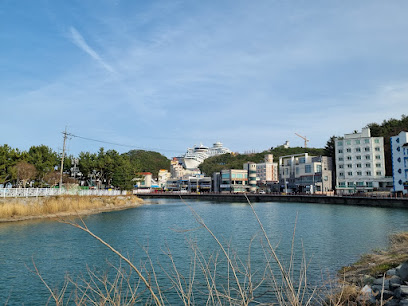
Daegwallyeong Sheep Farm
Discover the charm of rural Korea at Daegwallyeong Sheep Farm, a serene escape with interactive experiences and stunning landscapes.
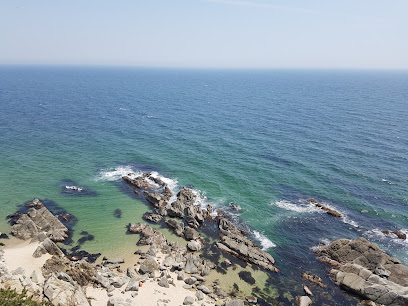
Skybay Hotel Gyeongpo
Discover the ultimate retreat at Skybay Hotel Gyeongpo, where luxury meets the breathtaking beauty of Gangwon-do's coastline.

Haslla Art World
Explore the stunning fusion of contemporary art and nature at Haslla Art World in Gangwon-do, a must-visit destination for art lovers and nature enthusiasts.
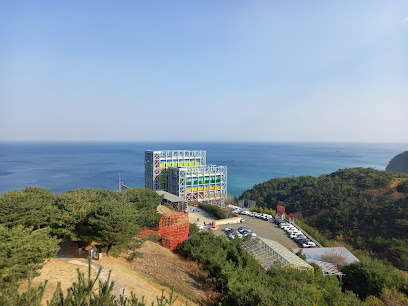
Jeongdongjin Beach
Discover the breathtaking beauty of Jeongdongjin Beach, a serene paradise known for stunning sunrises and relaxing coastal vibes.
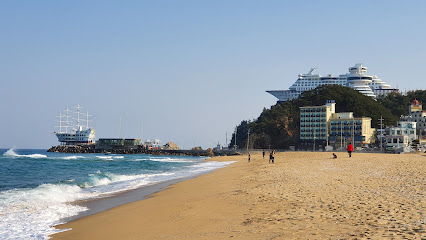
Badabuche Searoad Jeongdongjin
Experience the breathtaking coastal views and rich culture of Badabuche Searoad Jeongdongjin, a gem of Gangwon-do, South Korea.
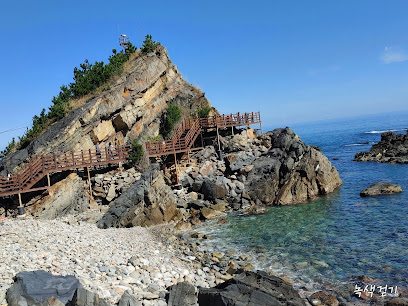
Heo Gyun Heo Nanseolheon Memorial Park
Explore Heo Gyun Heo Nanseolheon Memorial Park, a serene historical landmark in Gangwon-do celebrating Korea's rich literary heritage amidst tranquil gardens.

Lakai Sandpine Resort
Discover the breathtaking Lakai Sandpine Resort in Gangwon-do, where luxury meets nature on the stunning coastline of South Korea.

Drama 'Dokkaebi' Filming location
Explore the stunning 'Dokkaebi' filming location in Gangwon-do, where breathtaking views and a touch of drama come together in perfect harmony.

Unmissable attractions to see
Jumunjin Fish Market
Explore Gangneung's Jumunjin Fish Market, a seafood haven filled with fresh catches, local delicacies, and an authentic Korean market experience.

Ojukheon
Discover the cultural richness of Ojukheon, a historical landmark in Gangneung-si, celebrating the legacy of Confucian scholar Yulgok Yi I amidst serene gardens.
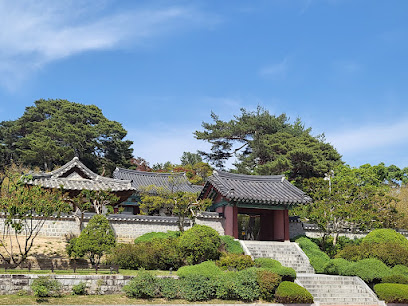
Gyeongpo Beach
Experience the beauty of Gyeongpo Beach, a stunning coastal paradise in Gangwon-do, South Korea, perfect for relaxation, adventure, and cultural exploration.
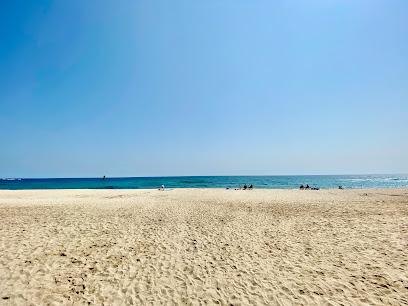
Sandglass Park
Experience tranquility and artistry at Sandglass Park, a unique tourist attraction in Gangwon-do, perfect for relaxation and recreation.
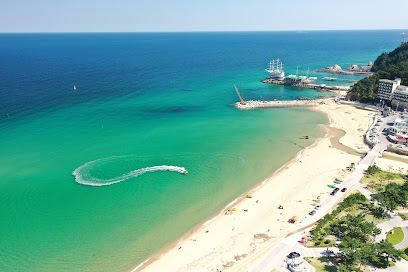
Daegwallyeong Sheep Farm
Discover the enchanting Daegwallyeong Sheep Farm in Gangwon-do, a perfect blend of nature, fun, and unforgettable sheep encounters.
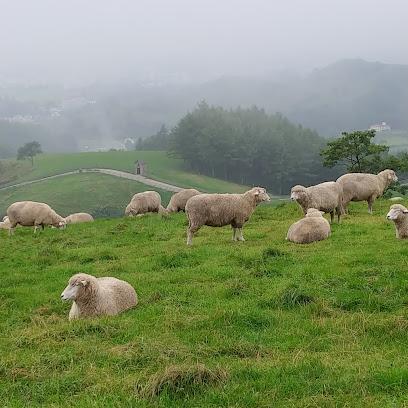
Eco Green Campus [Daegwallyeong Samyang Ranch]
Explore the Eco Green Campus at Daegwallyeong Samyang Ranch: a serene escape into nature with sustainable practices and delightful experiences.
![Eco Green Campus [Daegwallyeong Samyang Ranch]](https://evendo-location-media.s3.amazonaws.com/AttractionImages/23d0f18f-200f-4699-9676-55b9840a2c2a)
Jeongdongjin Beach
Experience the breathtaking sunrises and serene beauty of Jeongdongjin Beach, a must-visit coastal gem in Gangwon-do, South Korea.
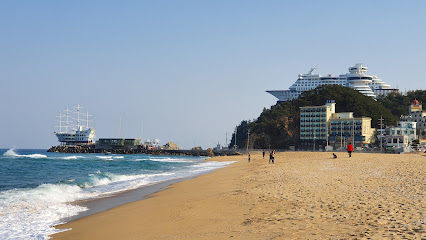
Haslla Art World
Explore the captivating fusion of contemporary art and breathtaking coastal views at Haslla Art World in Gangwon-do, South Korea.

Badabuche Searoad Jeongdongjin
Discover the stunning coastal beauty of Badabuche Searoad Jeongdongjin, where breathtaking views and serene walks await every traveler.
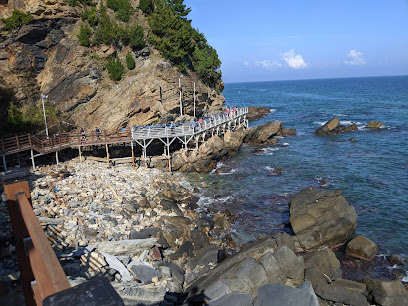
Adeul Rocky Park
Experience the breathtaking beauty of Adeul Rocky Park, a natural wonder in Gangwon-do, South Korea, perfect for outdoor adventures and relaxation.
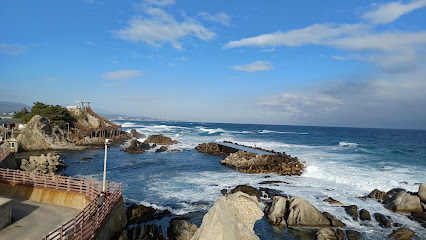
Heo Gyun Heo Nanseolheon Memorial Park
Explore Heo Gyun Heo Nanseolheon Memorial Park: A serene tribute to Korea's literary heritage amidst beautiful landscapes in Gangneung.
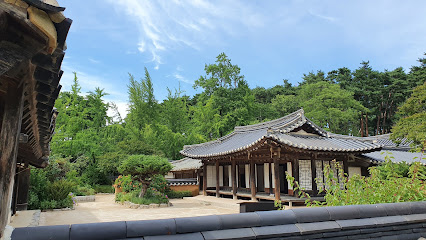
Seongyojang House 船桥庄
Discover the elegance of traditional Korean architecture at Seongyojang House, a historical gem nestled in Gangwon-do's scenic landscapes.
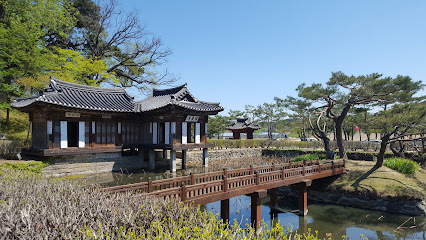
Gyeongpodae Pavilion
Explore Gyeongpodae Pavilion: A Historical Landmark with Stunning Sea Views in Gangneung, South Korea.
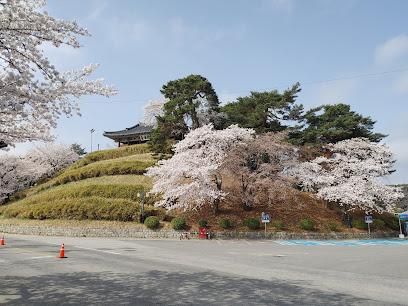
Gyeongpodae Pavilion
Discover the historical beauty of Gyeongpodae Pavilion in Gangwon-do, a serene landmark blending nature with Korea's rich heritage.
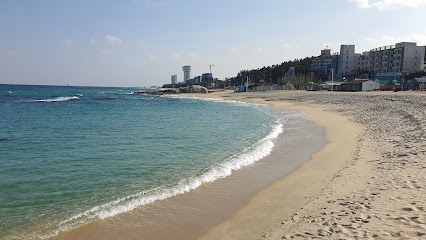
Chamsori Gramophone Museum and Edison Science Museum
Explore the wonders of sound and innovation at the Chamsori Gramophone Museum and Edison Science Museum in Gangwon-do, South Korea.
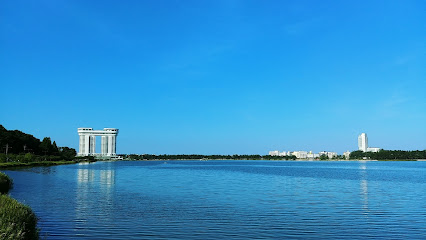
Essential places to dine
Jumunjin Fish Market
Experience fresh seafood delights at Jumunjin Fish Market—where local flavors meet vibrant culture in Gangneung.
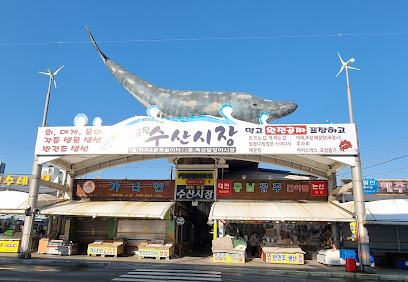
Terarosa Coffee
Discover Terarosa Coffee in Gangwon-do: where exceptional brews meet stunning views for an unforgettable café experience.
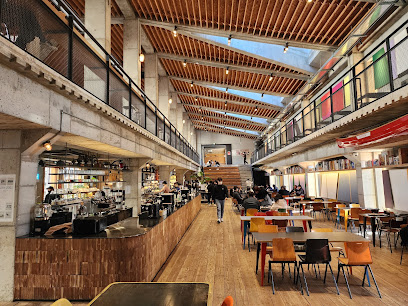
동화가든 본점
Savor authentic Korean tofu dishes at Donghwa Garden - a culinary gem in Gangneung-si offering fresh flavors and warm hospitality.
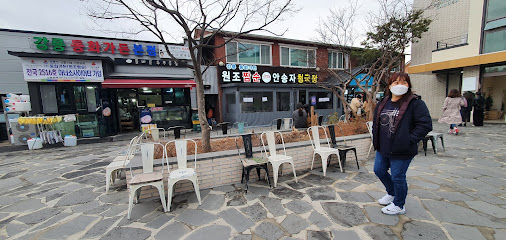
엄지네포장마차
Discover authentic Korean flavors at 엄지네포장마차 in Gangneung - a culinary gem offering delicious dishes in a warm atmosphere.
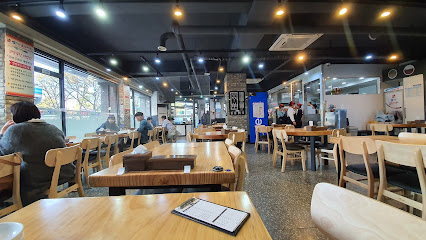
Lakai Sandpine Resort
Discover serenity at Lakai Sandpine Resort in Gangwon-do, where luxury meets breathtaking coastal beauty for an unforgettable getaway.
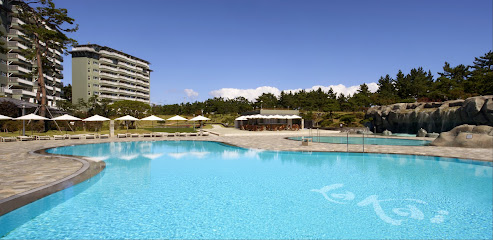
Hotel Tops 10
Discover comfort and culinary delights at Hotel Tops 10 in beautiful Gangwon-do, where Western and Korean flavors meet.

Hwangtae Hoegwan (Dried Pollack Restaurant)
Experience authentic Korean cuisine at Hwangtae Hoegwan, renowned for its delicious dried pollack dishes nestled in beautiful Pyeongchang.
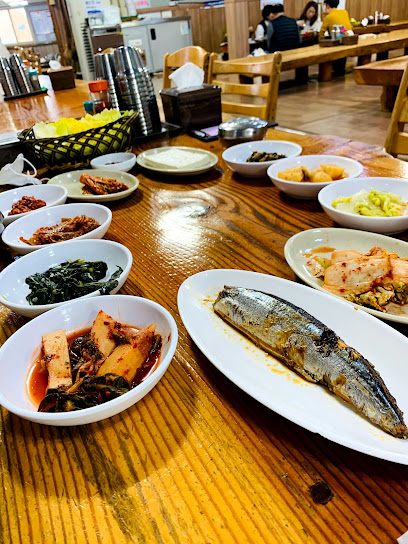
초당할머니순두부
Discover the heart of Korean cuisine at 초당할머니순두부 in Gangneung—famous for its authentic soft tofu stew and warm hospitality.
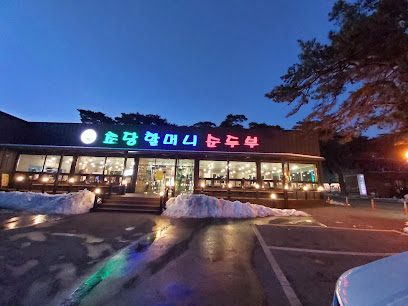
Gyodong Banjeom
Experience authentic Chinese cuisine at Gyodong Banjeom in Gangneung - where every meal is a culinary journey.
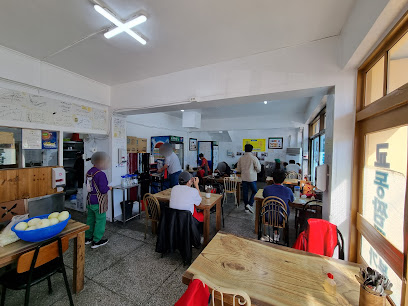
Cafe Paul & Mary
Experience the best of fast food at Cafe Paul & Mary in Gangwon-do—where delicious hamburgers meet local charm.
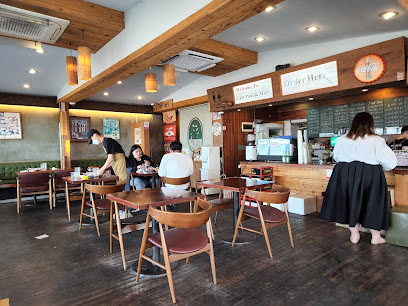
Soontofu Gelato
Discover Soontofu Gelato in Gangwon-do – where deliciously crafted ice cream meets local charm in a picturesque setting.
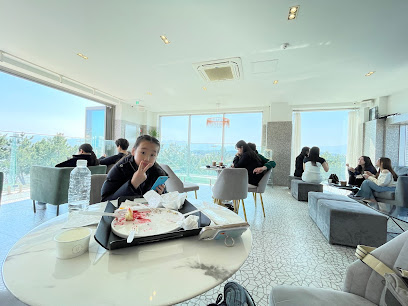
Starbucks
Discover comfort at Starbucks in Gangneung: your perfect coffee stop filled with warmth, flavor, and local charm.
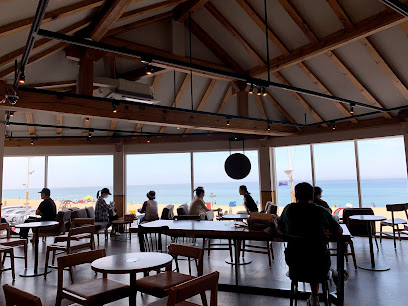
Sonamu Jib (Pine Tree House) Chodang Soft Tofu
Experience authentic Korean cuisine at Sonamu Jib (Pine Tree House), famous for its delectable soft tofu dishes in scenic Gangwon-do.
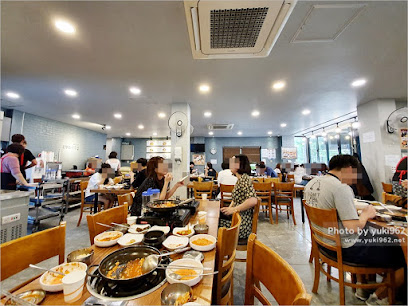
Budnamu Brewery
Explore the finest craft beers at Budnamu Brewery in Gangwon-do—where tradition meets innovation in every pint.
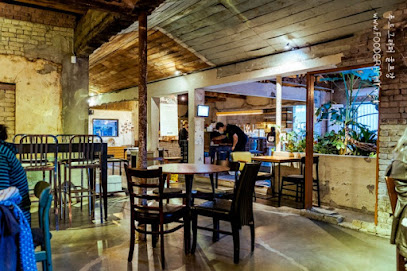
초당맷돌순두부
Discover authentic flavors at 초당맷돌순두부 in Gangneung-si - your gateway to traditional Korean dining with exquisite Sundubu-jjigae.

Markets, malls and hidden boutiques
Gangneung Jungang Market
Experience the heart of Gangneung at Jungang Market, where local flavors and vibrant culture come together in a bustling atmosphere.
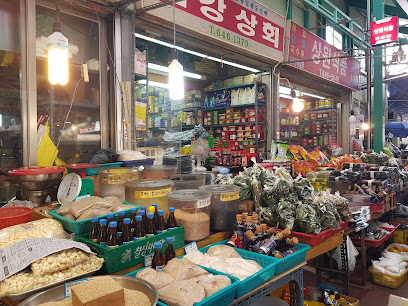
Jumunjin Fish Market
Explore Jumunjin Fish Market, a lively seafood haven in Gangneung, offering fresh catches and authentic Korean culinary experiences.
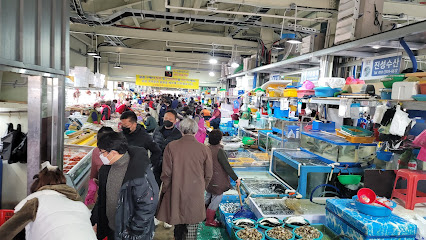
Ojukheon
Explore Ojukheon: A Historical Landmark Celebrating Korea's Cultural Heritage and the Life of Scholar Yulgok Lee I.
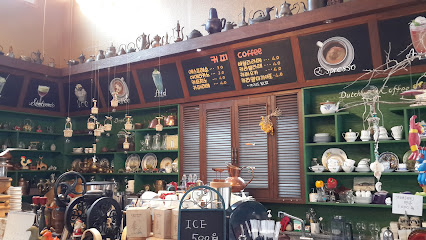
Anmok Beach
Discover the beauty of Anmok Beach in Gangwon-do, where sun, sand, and coffee culture come together for an unforgettable coastal escape.
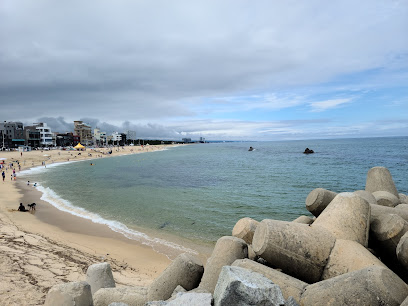
Terarosa Coffee
Discover Terarosa Coffee in Gangwon-do, where exceptional brews meet stunning design in a coffee lover's paradise.
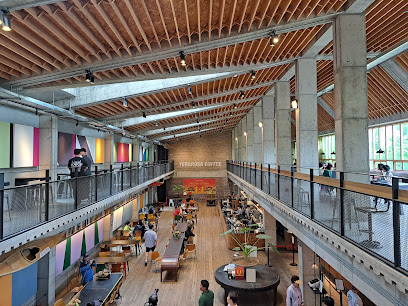
Haslla Art World
Explore Haslla Art World, where contemporary art meets stunning landscapes in Gangwon-do's premier cultural attraction.
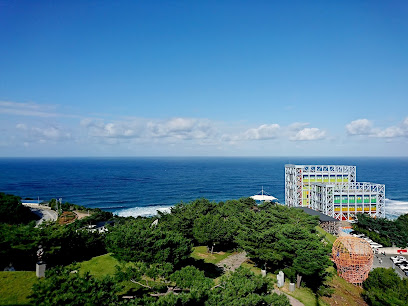
Badabuche Searoad Jeongdongjin
Discover the breathtaking beauty of Badabuche Searoad Jeongdongjin, a coastal paradise in Gangwon-do, South Korea, perfect for scenic drives and exploration.
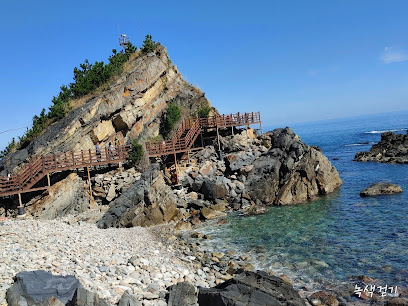
Lakai Sandpine Resort
Discover the tranquility of Lakai Sandpine Resort, a luxurious escape along South Korea's breathtaking Gangwon-do coastline.
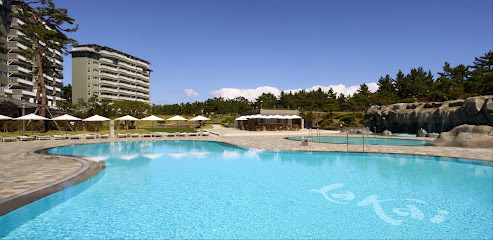
emart Gangneung
Experience the essence of Korean shopping at E-Mart Gangneung, where local flavors and global goods await every traveler.
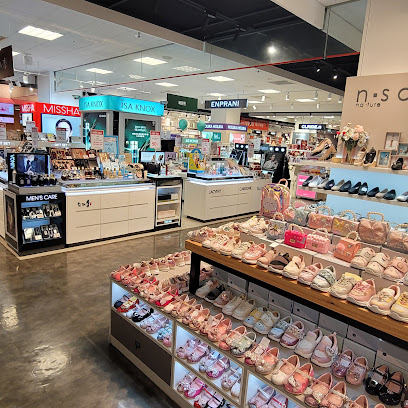
Arte Museum Valley Gangneung
Experience contemporary art like never before at Arte Museum Valley Gangneung, where creativity meets nature in a stunning visual journey.
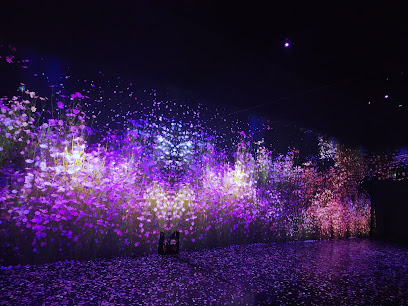
Seongyojang House 船桥庄
Explore Seongyojang House, a beautifully preserved historical landmark in Gangneung-si, offering a glimpse into Korea's rich cultural heritage.
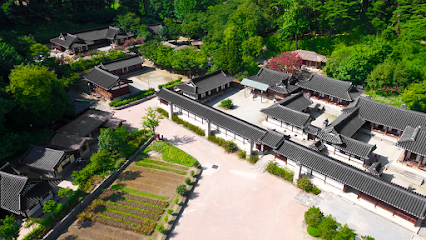
Homeplus Gangneung
Explore the vibrant Homeplus Gangneung, where shopping meets local culture in a delightful hypermarket experience.
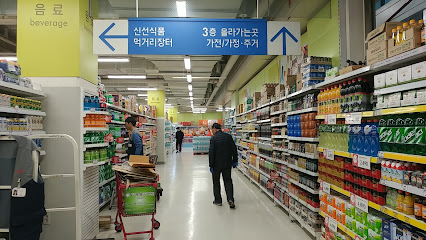
카페툇마루
Discover Café Toenmaru in Gangneung: A serene café experience with artistic drinks and a cozy ambiance perfect for relaxation.
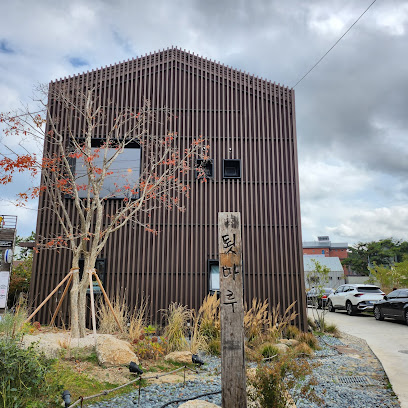
Soontofu Gelato
Experience the bliss of artisanal ice cream at Soontofu Gelato in Gangneung-si, where every scoop is a taste of local culture and creativity.
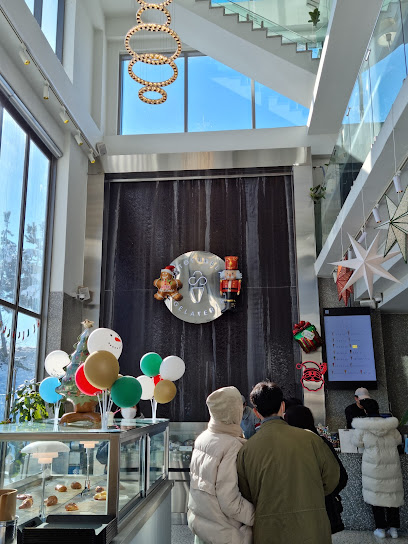
BTS Bus Stop
Discover the enchanting BTS Bus Stop in Gangwon-do, a picturesque spot that brings K-drama magic to life amidst stunning coastal views.
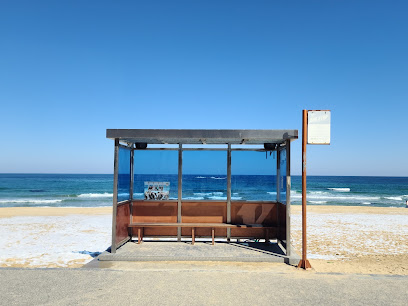
Essential bars & hidden hideouts
Budnamu Brewery
Explore the rich flavors of Korean craft beer at Budnamu Brewery, where tradition meets innovation in a vibrant setting.
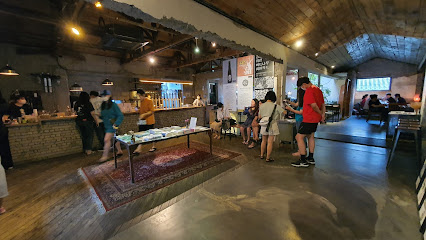
Long Bread
Savor delectable brunch dishes in a cozy atmosphere at Long Bread, a hidden gem in Gangneung-si, Gangwon-do.
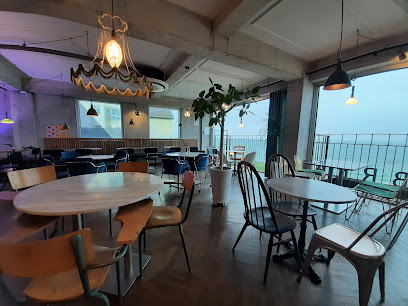
생활맥주 강릉성남점(Daily Beer Gangneung Seongnam)
Discover the essence of craft brewing at Daily Beer Gangneung Seongnam, where flavor meets culture in a vibrant pub atmosphere.
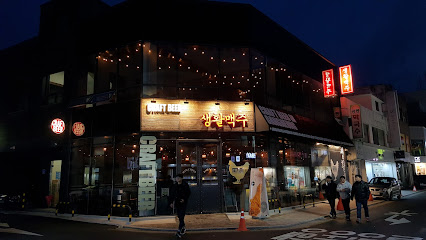
강릉 러쉬 뮤직바 - Rush Music Bar
Discover the vibrant nightlife at Rush Music Bar in Gangneung, where live music and a friendly atmosphere create unforgettable memories.

Bar Astar
Discover Bar Astar, a cocktail bar in Gangwon-do, where innovative drinks and vibrant atmosphere create the perfect nightlife experience for tourists.
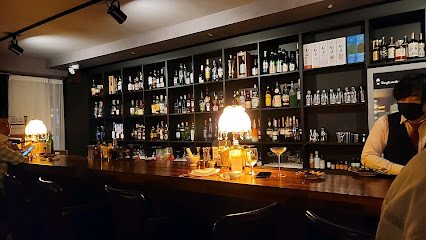
안목해변 술집 문문
Experience the essence of Korean cuisine at Munmun Bar, your perfect beachside retreat in Gangwon-do.
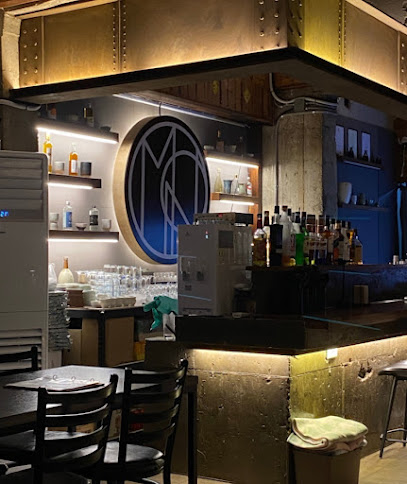
White Crow Taphouse
Experience the warm ambiance and craft brews at White Crow Taphouse, a must-visit bar and family restaurant in Gangneung-si.
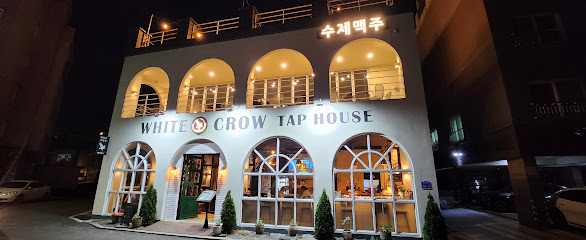
오조식당
Discover the vibrant nightlife of Gangneung at 오조식당, where local drinks and a lively atmosphere create unforgettable experiences.
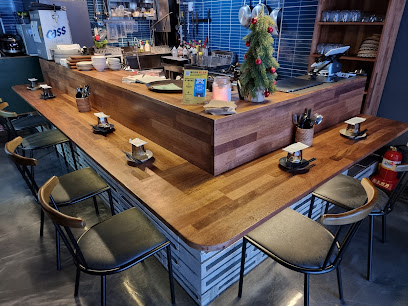
경포펍
Discover the vibrant nightlife at 경포펍, a popular bar in Gangneung, offering local drinks and a lively atmosphere by the beautiful coast.
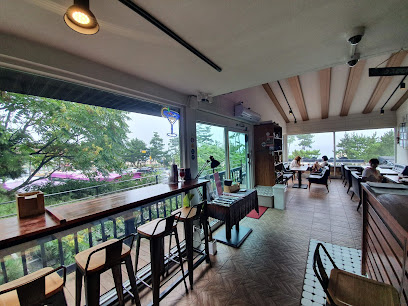
정혜영 COOK Chicken & Pub
Discover the best of Korean nightlife at 정혜영 COOK Chicken & Pub, where delicious fried chicken meets a vibrant atmosphere in Gangneung-si.
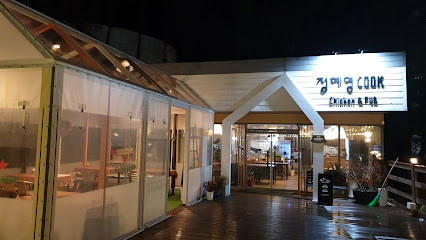
hafakiki beach lounge
Discover the ultimate beachside experience at Hafakiki Beach Lounge in Gangwon-do, where delicious cuisine meets live music and stunning ocean views.
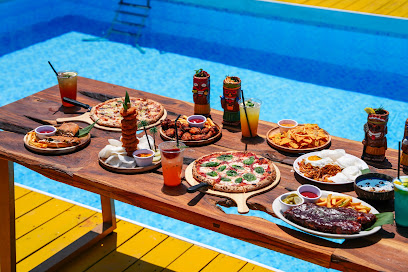
Local Phrases about Gangneung Coastal Areas
-
- Hello안녕하세요
[annyeonghaseyo] - Goodbye안녕히 가세요
[annyeonghi gaseyo] - Yes네
[ne] - No아니요
[aniyo] - Please/You're welcome부탁합니다/천만에요
[butakhamnida/cheonmaneyo] - Thank you감사합니다
[gamsahamnida] - Excuse me/Sorry죄송합니다
[joesonghamnida] - How are you?어떻게 지내세요?
[eotteoke jinaeseyo?] - Fine. And you?잘 지내고요. 당신은요?
[jal jinaegoyo. dangsineunyo?] - Do you speak English?영어 하세요?
[yeongeo haseyo?] - I don't understand이해하지 못해요
[ihaehaji mothaeyo]
- Hello안녕하세요
-
- I'd like to see the menu, please메뉴를 보고 싶어요
[menyureul bogo sipeoyo] - I don't eat meat고기를 먹지 않아요
[gogireul meokji anayo] - Cheers!건배!
[geonbae!] - I would like to pay, please계산하고 싶어요
[gyesanhago sipeoyo]
- I'd like to see the menu, please메뉴를 보고 싶어요
-
- Help!도와주세요!
[dowajuseyo!] - Go away!가세요!
[gaseyo!] - Call the Police!경찰을 불러주세요!
[gyeongchareul bulleojuseyo!] - Call a doctor!의사를 불러주세요!
[uisareul bulleojuseyo!] - I'm lost길을 잃었어요
[gireul ilheosseoyo] - I'm ill아파요
[apayo]
- Help!도와주세요!
-
- I'd like to buy...사고 싶어요...
[sago sipeoyo...] - I'm just looking구경만 하고 있어요
[gugyeongman hago isseoyo] - How much is it?얼마에요?
[eolmaeyo?] - That's too expensive너무 비싸요
[neomu bissayo] - Can you lower the price?가격을 깎을 수 있어요?
[gageogeul kkageul su isseoyo?]
- I'd like to buy...사고 싶어요...
-
- What time is it?지금 몇 시에요?
[jigeum myeot sieyo?] - It's one o'clock한 시에요
[han sieyo] - Half past (10)십 시 반
[sip si ban] - Morning아침
[achim] - Afternoon오후
[ohu] - Evening저녁
[jeonyeok] - Yesterday어제
[eoje] - Today오늘
[oneul] - Tomorrow내일
[naeil] - 1한
[han] - 2둘
[dul] - 3셋
[set] - 4넷
[net] - 5다섯
[daseot] - 6여섯
[yeoseot] - 7일곱
[ilgob] - 8여덟
[yeodeol] - 9아홉
[ahop] - 10열
[yeol]
- What time is it?지금 몇 시에요?
-
- Where's a/the...?어디에 ...이/가 있어요?
[eodie ...i/ga isseoyo?] - What's the address?주소가 뭐에요?
[jusoga mwoeyo?] - Can you show me (on the map)?지도로 보여주세요?
[jidoro boyeojuseyo?] - When's the next (bus)?다음 버스 언제와요?
[daeum beoseu eonjewayo?] - A ticket (to ....)...(으)로 티켓 하나 주세요
[...(e)ro tikes hana juseyo]
- Where's a/the...?어디에 ...이/가 있어요?
History of Gangneung Coastal Areas
-
Gangneung has been an important settlement since the Three Kingdoms Period (57 BC – 668 AD). Originally known as 'Gyerim,' it was part of the Silla Kingdom. The city later became a significant cultural and political center in the Goryeo dynasty (918–1392).
-
During the Goryeo Dynasty, Gangneung grew in prominence. Ojukheon House, built in the early 15th century, is one of the oldest wooden residential buildings in Korea. It is famously the birthplace of the Confucian scholar Yi I (Yulgok) and his mother Shin Saimdang, a prominent artist and calligrapher.
-
In the Joseon Dynasty (1392–1897), Gangneung continued to flourish. Seongyojang House, built in 1703, exemplifies the architectural style of the time. This grand mansion belonged to a prominent yangban (aristocratic) family and now provides a glimpse into the lifestyle of the Korean nobility.
-
During the Japanese occupation of Korea (1910–1945), Gangneung underwent significant changes. The coastal areas were developed for fishing and trade. Some of the architecture and infrastructure from this period still remain, reflecting the influence of Japanese colonial rule.
-
Gangneung was relatively spared from the direct impacts of the Korean War (1950–1953). However, the post-war period saw significant reconstruction and modernization efforts. The coastal areas were developed into tourist destinations, capitalizing on their natural beauty and historical significance.
-
In 1996, Gangneung was the site of a significant military incident when a North Korean submarine ran aground near the city. The crew attempted to infiltrate South Korea, leading to a large-scale manhunt and increased military tensions. The incident is a stark reminder of the ongoing conflict on the Korean Peninsula.
-
Gangneung played a crucial role in the 2018 Winter Olympics, hosting events such as figure skating, curling, and ice hockey. This international event brought significant attention to the region, boosting its global profile and tourism.
Gangneung Coastal Areas Essentials
-
Gangneung is located in the Gangwon Province of South Korea. The nearest international airport is Incheon International Airport in Seoul, approximately 230 kilometers away. From Seoul, you can take the KTX high-speed train from Seoul Station to Gangneung Station, which typically takes around 2 hours. Alternatively, express buses run frequently from Dong Seoul Bus Terminal to Gangneung Intercity Bus Terminal, with a travel time of about 3 hours.
-
Gangneung offers several transportation options for visitors. The city has an efficient public bus system that connects various parts of the city and surrounding areas. Taxis are readily available and relatively inexpensive. For a more flexible option, renting a car can be convenient, especially if you plan to explore the coastal areas and nearby attractions. Bicycles are also a popular mode of transport, with rental shops available near Gyeongpo Lake and other tourist areas.
-
The official currency in South Korea is the South Korean Won (KRW). Credit cards are widely accepted in hotels, restaurants, and shops in Gangneung. However, it is advisable to carry some cash, especially when visiting smaller establishments or local markets. ATMs are available throughout the city, and many offer services in English.
-
Gangneung is generally a safe destination for tourists. However, it is always wise to take standard precautions. Avoid walking alone late at night in unfamiliar areas and keep an eye on your belongings in crowded places. While Gangneung does not have any specific high-crime areas targeting tourists, it is best to stay vigilant and aware of your surroundings.
-
In case of emergency, dial 119 for immediate assistance. Gangneung has local police stations and medical facilities available. It is recommended to have travel insurance that covers medical emergencies. For minor health issues, there are numerous pharmacies in the city where you can purchase over-the-counter medications.
-
Fashion: Do dress modestly, especially when visiting religious sites. Avoid wearing overly revealing clothing. Religion: Do respect local customs and traditions. Remove your shoes before entering temples and be mindful of your behavior in sacred spaces. Public Transport: Do be respectful and give up your seat to elderly passengers. Don't talk loudly or disturb others on public transport. Greetings: Do greet people with a slight bow or a handshake. A polite 'Annyeonghaseyo' (hello) is appreciated. Eating & Drinking: Do try local delicacies and accept food offerings graciously. Don't leave food on your plate as it is considered wasteful.
-
To experience Gangneung like a local, visit the traditional markets such as Gangneung Jungang Market, where you can buy fresh produce and local specialties. Engage with locals, as they are often friendly and eager to share information about the city's history and culture. Don't miss visiting the scenic Gyeongpo Lake and the beautiful Jeongdongjin Beach, famous for its sunrise views. For a unique experience, take a ride on the Jeongdongjin Rail Bike, offering stunning coastal scenery.
Trending Landmarks in Gangneung Coastal Areas
-
Gangneung Jungang Market
-
Ojukheon
-
Anmok Beach
-
Gyeongpo Beach
-
Sun Cruise Hotel
-
St. John's Hotel
-
Sandglass Park
-
Daegwallyeong Sheep Farm
-
Skybay Hotel Gyeongpo
-
Haslla Art World
-
Jeongdongjin Beach
-
Badabuche Searoad Jeongdongjin
-
Heo Gyun Heo Nanseolheon Memorial Park
-
Lakai Sandpine Resort
-
Drama 'Dokkaebi' Filming location
Nearby Cities to Gangneung Coastal Areas
-
Things To Do in Andong
-
Things To Do in Seoul
-
Things To Do in Suwon
-
Things To Do in Pohang
-
Things To Do in Incheon
-
Things To Do in Daejeon
-
Things To Do in Gyeongju
-
Things To Do in Daegu
-
Things To Do in Ulsan
-
Things To Do in Jeonju
-
Things To Do in Busan
-
Things To Do in Suncheon
-
Things To Do in Gwangju
-
Things To Do in Mokpo
-
Things To Do in Fukuoka

